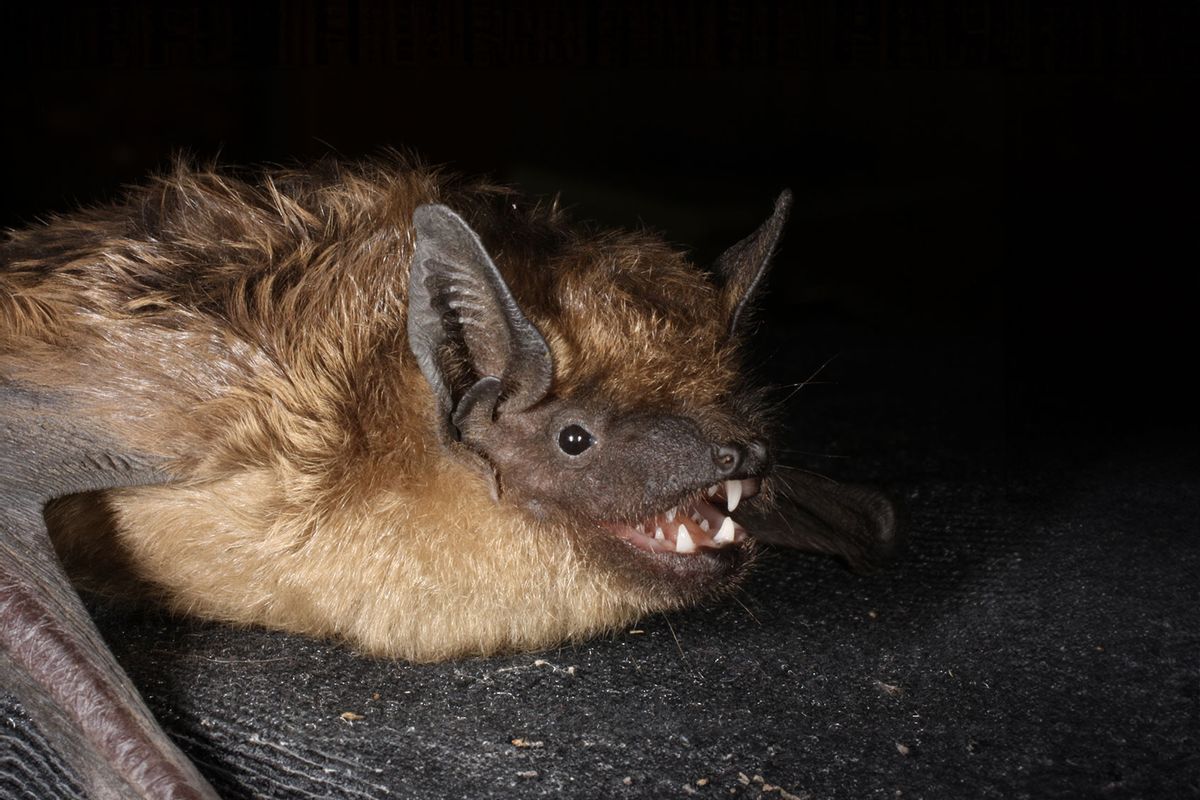These bat penises are so enormous, they can’t be used for penetrative sex, study finds

The shape and function of a penis is unique among some animals. Not every creature has one — birds, for example, simply eject sperm from their cloaca. But among male mammals, penises are widespread and quite useful for reproduction. If you need a refresher, the standard model of a penis is one that penetrates a female in order to spread biological material, continuing the cycle of life. A penetrating organ specialized in this way is known as “intromittent,” and among mammals, there have been no known exceptions to this rule — until now.
According to a recent study published in the journal Current Biology, the male serotine bat (Eptesicus serotinus) has a penis so large it cannot penetrate the females in their species. It isn’t because their phalluses are too small — in fact, the issue is exactly the opposite: their penises are way too big.
A fully erect serotine bat penis is seven times longer and wider than the female’s vagina, with a bulging head the shape of a splitting grapefruit with a dent on the side, making penetrative sex physically impossible. Instead, the male serotine bats use their penises to push aside the protective tail membrane of the female members in order to reach their vulva. Once this has been accomplished, the bats participate in what is known as “cloacal mating” — that is, a practice in which the two animals rub against each other similar to “cloacal kissing” in birds.
The fully erect serotine bat penis is seven times longer and wider than their species’ vagina, with a bulging head the shape of a splitting grapefruit, making penetrative sex physically impossible.
“To a degree, the female could employ the tail membrane to avoid copulation,” the authors explain. “Consequently, E. serotinus’s long penis might serve as a ‘copulatory arm’ to bypass the membrane of the female. The hollow structure observed on the dorsal side of the erect penis might serve as a suction cup and support the maintenance of the copulatory contact.”
As one of the authors, Nicolas Fasel of the University of Lausanne, explained in a statement, “we had observed that these bats have disproportionately long penises, and we were always wondering ‘how does that work?’ We thought maybe it’s like in the dog where the penis engorges after penetration so that they are locked together, or alternatively maybe they just couldn’t put it inside, but that type of copulation hasn’t been reported in mammals until now.”
Want more health and science stories in your inbox? Subscribe to Salon’s weekly newsletter Lab Notes.
“E. serotinus’s long penis might serve as a ‘copulatory arm’ to bypass the membrane of the female.”
To learn about serotine bat mating practices, bats at a rehabilitation center in Ukraine and in a Dutch church were closely observed with cameras. The team of scientists was ultimately able to chronicle 97 mating events, during which the male bats would grab the females by their napes and probed the females’ pelvises with their penises until they made contact with the vulva. After that, they would hold still for a prolonged period and embrace the females through the process of copulation.
And these bats can go for a long time. “Half of the recorded copulations lasted for less than 53 [minutes], but the longest event extended to 12.7 hours,” the authors reported.
It seems this was enough to transfer semen, as the female bats appeared wet after copulation, but more research is needed to really know for sure. It’s not easy to study the mating habits of mouse-sized flying creatures that prefer the shadows, so when it comes to bat sex, we are largely in the dark.
“With the caveat that sperm transfer occurs during the recorded putative copulatory events, this study reveals a novel copulatory pattern in mammals,” the authors wrote. “Further investigation should focus on the role played by pre- and post-copulatory female choice as well as male competition in the evolution of this prolonged and particular mating behaviour.”
Studying bats can teach us something about human evolution as well. According to a 2021 study published by Ahana Aurora Fernandez, a Postdoctoral Researcher in Behavioral Ecology and Bioacoustics at the Museum für Naturkunde, Berlin, bat pups engage in a form of babbling similar to that used by infant humans. Specifically they found that bat pups from a species known as the neotropical greater sac-winged bat, Saccopteryx bilineata, “engage in daily babbling behavior during large parts of their development.” Fernandez added that “greater sac-winged bats possess a large vocal repertoire that includes 25 distinct syllable types. A syllable is the smallest acoustic unit, defined as a sound surrounded by silence. These adult bats create multisyllabic vocalizations and two song types.”
On a more somber note, there has been an increased amount of interest in bats due to the COVID-19 pandemic, which likely began due to a virus (SARS-CoV-2) that originates in bats. A February 2020 study in the journal eLife revealed that bats have such a fierce immune system when responding to pathogens that they could help viruses replicate faster — meaning they wreak chaos on human immune systems when a person is infected.
“The bottom line is that bats are potentially special when it comes to hosting viruses,” Mike Boots, a disease ecologist and UC Berkeley professor of integrative biology, told Science Daily about that study. “It is not random that a lot of these viruses are coming from bats. Bats are not even that closely related to us, so we would not expect them to host many human viruses. But this work demonstrates how bat immune systems could drive the virulence that overcomes this.”
Read more
about bats

